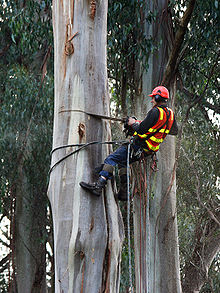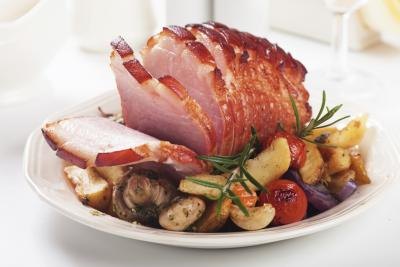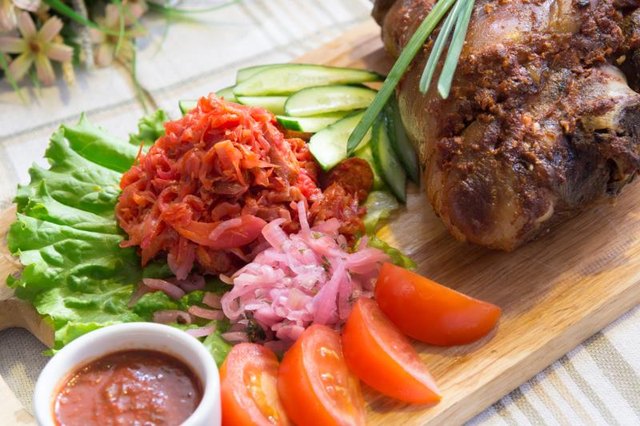In agriculture, postharvest handling is the stage of crop production immediately following harvest, including cooling, cleaning, sorting and packing. The instant a crop is removed from the ground, or separated from its parent plant, it begins to deteriorate. Postharvest treatment largely determines final quality, whether a crop is sold for fresh consumption, or used as an ingredient in a processed food product.

Drying and bagging of peanuts in Jiangxia District, Hubei, China
Goals

Drying chili peppers. Milyanfan, Kyrgyzstan.
The most important goals of post-harvest handling are keeping the product cool, to avoid moisture loss and slow down undesirable chemical changes, and avoiding physical damage such as bruising, to delay spoilage. Sanitation is also an important factor, to reduce the possibility of pathogens that could be carried by fresh produce, for example, as residue from contaminated washing water.
After the field, post-harvest processing is usually continued in a packing house. This can be a simple shed, providing shade and running water, or a large-scale, sophisticated, mechanized facility, with conveyor belts, automated sorting and packing stations, walk-in coolers and the like. In mechanized harvesting, processing may also begin as part of the actual harvest process, with initial cleaning and sorting performed by the harvesting machinery.
Initial post-harvest storage conditions are critical to maintaining quality. Each crop has an optimum range for storage temperature and humidity. Also, certain crops cannot be effectively stored together, as unwanted chemical interactions can result. Various methods of high-speed cooling, and sophisticated refrigerated and atmosphere-controlled environments, are employed to prolong freshness, particularly in large-scale operations.
Regardless of the scale of harvest, from domestic garden to industrialized farm, the basic principles of post-harvest handling for most crops are the same: handle with care to avoid damage (cutting, crushing, bruising), cool immediately and maintain in cool conditions, and cull (remove damaged items).
Postharvest Shelf Life
Once harvested, vegetable and fruit are subject to the active process of senescence. Numerous biochemical processes continuously change the original composition of the crop until it becomes unmarketable. The period during which consumption is considered acceptable is defined as the time of "postharvest shelf life".
Postharvest shelf life is typically determined by objective methods that determine the overall appearance, taste, flavor, and texture of the commodity. These methods usually include a combination of sensorial, biochemical, mechanical, and colorimetric (optical) measurements. A recent study attempted (and failed) to discover a biochemical marker and fingerprint methods as indices for freshness .
Postharvest Physiology
Postharvest physiology is the scientific study of the physiology of living plant tissues after they have denied further nutrition by picking. It has direct applications to postharvest handling in establishing the storage and transport conditions that best prolong shelf life.
An example of the importance of the field to post-harvest handling is the discovery that ripening of fruit can be delayed, and thus their storage prolonged, by preventing fruit tissue respiration. This insight allowed scientists to bring to bear their knowledge of the fundamental principles and mechanisms of respiration, leading to post-harvest storage techniques such as cold storage, gaseous storage, and waxy skin coatings. Another well known example is the finding that ripening may be brought on by treatment with ethylene.
References
- ^ Janet Bachmann and Richard Earles (August 2000). "Postharvest Handling of Fruits and Vegetables". NCAT. Archived from the original on 2002-02-11.
- ^ actahort.org.
External Links
- Wikipedia












